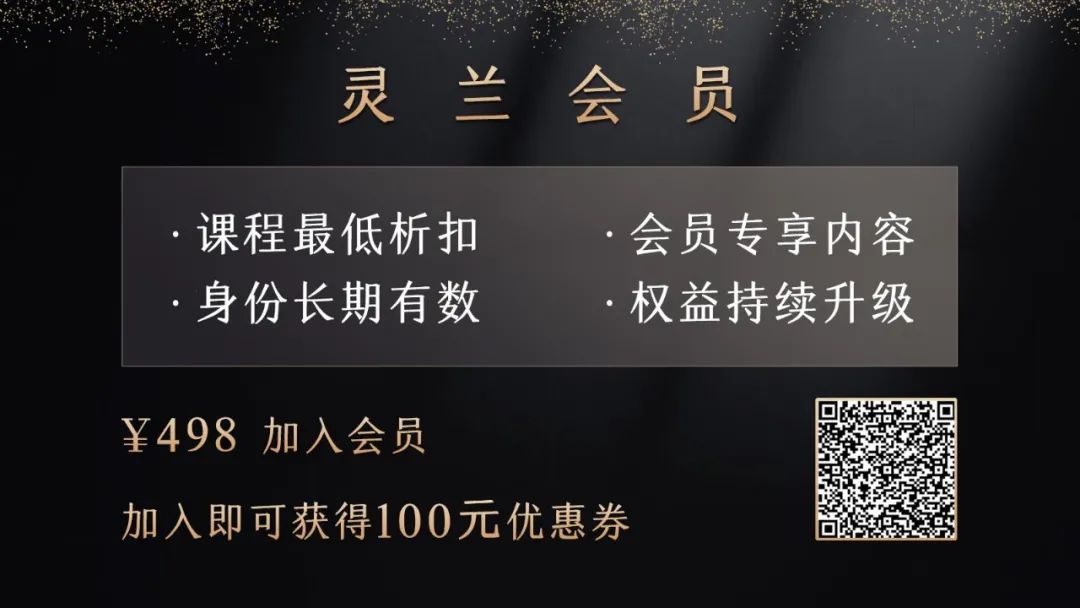
Click the blue text above to follow us

Chinese Medicine Book Club Issue 3076
One issue daily, accompanying the growth of TCM practitioners
IIntroduction: Da Yuan Decoction, created by the Ming Dynasty TCM physician Wu Youke, is recorded in the “Treatise on Epidemics”. It consists of seven herbs: Bing Lang (Areca nut), Hou Po (Magnolia bark), Cao Guo (Tsaoko fruit), Zhi Mu (Anemarrhena), Shao Yao (Peony), Huang Qin (Scutellaria), and Gan Cao (Licorice). It is used for epidemics or malaria with symptoms of alternating fever and chills, occurring one to three times daily. The author used Chai Hu (Bupleurum) and Da Yuan Decoction to treat two cases of afternoon low fever as follows. (Editor/Qian Cheng)

Case Study 1: Treatment of Afternoon Low Fever with Chai Hu and Da Yuan Decoction
Author: Guo Yanpeng
Case 1
Initial diagnosis date: April 15, 2021. Name: Wang XX, Gender: Female, Age: 57.
Drug allergy history: None.
Main complaint: Alternating fever and chills every afternoon for 2 weeks.
Present illness history: Two weeks ago, after catching a cold, the patient developed alternating fever and chills every afternoon. Relevant examinations at a tertiary hospital showed no significant abnormalities. Current symptoms: Alternating fever and chills every afternoon, with coldness in the waist and legs accompanied by low fever, dry mouth, bitter taste, and sticky mouth, desire to drink warm water, fatigue, shortness of breath, tendency to cry, normal appetite, normal sleep, normal urination and defecation. No other discomfort.
Past history, personal history, family history: Healthy.
Tongue diagnosis: Red tongue with thick yellow greasy coating.
Pulse diagnosis: Deep, wiry, slippery pulse.
TCM diagnosis: Alternating fever and chills, evil lurking in the membrane source syndrome.
Western diagnosis: Unexplained low fever.
TCM treatment method: Open the membrane source.
Prescription: Cao Guo (Tsaoko fruit) 8g, Jiao Bing Lang (Fried Areca nut) 15g, Hou Po (Magnolia bark) 10g, Bai Shao (White Peony) 15g, Zhi Mu (Anemarrhena) 12g, Huang Qin (Scutellaria) 10g, Chai Hu (Bupleurum) 12g, Fa Ban Xia (Pinellia) 10g, Qing Hao (Artemisia) 20g, Yin Chen (Virgate Wormwood) 20g, Chen Pi (Tangerine Peel) 10g, Zhi Gan Cao (Honey-fried Licorice) 6g. 5 doses, 1 dose per day, decocted in water for oral administration.
Precautions: Take medicine at noon and evening.
Follow-up visit 1, date: April 19, 2021.
Symptom changes: Alternating fever and chills every afternoon disappeared (no recurrence after taking 2 doses), dry mouth, bitter taste, and sticky mouth improved, desire to drink warm water, fatigue and shortness of breath reduced, tendency to cry improved, normal appetite, normal sleep, normal urination and defecation. No other discomfort.
Tongue diagnosis: Red tongue with yellow greasy coating.
Pulse diagnosis: Deep, wiry, slippery pulse.
Symptom change analysis and prescription adjustment thought: Although alternating fever and chills did not occur, the tongue coating remained yellow and greasy, indicating that the evil had not been cleared.
Prescription: Cao Guo (Tsaoko fruit) 10g, Jiao Bing Lang (Fried Areca nut) 15g, Hou Po (Magnolia bark) 10g, Bai Shao (White Peony) 15g, Zhi Mu (Anemarrhena) 12g, Huang Qin (Scutellaria) 10g, Chai Hu (Bupleurum) 12g, Fa Ban Xia (Pinellia) 10g, Qing Hao (Artemisia) 15g, Yin Chen (Virgate Wormwood) 20g, Chen Pi (Tangerine Peel) 10g, Zhi Gan Cao (Honey-fried Licorice) 6g, Sheng Yi Yi Ren (Raw Coix Seed) 30g, Bai Mao Gen (White Reed Root) 20g, Jiao Gu Lan (Gynostemma) 15g, Sheng Bai Zhu (Raw Atractylodes) 15g. 7 doses, 1 dose per day, decocted in water for oral administration.
Precautions: Take medicine at noon and evening.
Follow-up visit 2, date: May 28, 2021.
Symptom changes: Alternating fever and chills every afternoon disappeared (no recurrence after taking 2 doses), dry mouth, bitter taste, and sticky mouth significantly improved, desire to drink warm water, fatigue and shortness of breath improved, tendency to cry disappeared, normal appetite, normal sleep, normal urination and defecation. No other discomfort.
Tongue diagnosis: Red tongue with slightly greasy yellow coating.
Pulse diagnosis: Deep, slippery pulse.
Symptom change analysis and prescription adjustment thought: The tongue coating has mostly transformed, so I will enhance the ability to transform dampness and open the membrane source.
Prescription: Cao Guo (Tsaoko fruit) 10g, Jiao Bing Lang (Fried Areca nut) 15g, Hou Po (Magnolia bark) 10g, Bai Shao (White Peony) 15g, Zhi Mu (Anemarrhena) 12g, Huang Qin (Scutellaria) 10g, Chai Hu (Bupleurum) 12g, Fa Ban Xia (Pinellia) 10g, Qing Hao (Artemisia) 15g, Yin Chen (Virgate Wormwood) 20g, Chen Pi (Tangerine Peel) 10g, Zhi Gan Cao (Honey-fried Licorice) 6g, Sheng Yi Yi Ren (Raw Coix Seed) 30g, Bai Mao Gen (White Reed Root) 30g, Jiao Gu Lan (Gynostemma) 15g, Cang Zhu (Atractylodes) 15g. 7 doses, 1 dose per day, decocted in water for oral administration.
Precautions: Take medicine at noon and evening.Case summary:For alternating fever and chills, practitioners should not only rely on Xiao Chai Hu Decoction but also consider Da Yuan Decoction. When the patient presented with symptoms, Xiao Chai Hu Decoction was already in mind, but upon observing the tongue and pulse, it was clear that Xiao Chai Hu Decoction would be ineffective, thus Da Yuan Decoction was used with excellent results, resolving symptoms that Western medicine had failed to address after multiple tests and treatments over a month.
Case 2
Initial diagnosis date: October 11, 2021. Name: Li XX, Gender: Female, Age: 53.
Drug allergy history: None.
Main complaint: Subtle pain in the stomach area during bumps for 3 days.
Present illness history: Three days ago, after fatigue, the patient experienced subtle pain in the stomach during bumps, dry mouth, sour and bitter taste in the morning, occasional low fever of 37.5℃ in the afternoon, lumbar pain, recent chills, normal appetite, nausea when encountering cold, poor sleep, difficulty falling asleep, normal urination and defecation. Menopause for 10 years.
Past history, personal history, family history: Hypertension.
Tongue diagnosis: Dark red tongue with thin yellow greasy coating.
Pulse diagnosis: Deep, wiry, slippery pulse.
TCM diagnosis: Stomach pain, Shao Yang disharmony syndrome.
Western diagnosis: Stomach pain, unexplained low fever.
TCM treatment method: Harmonize Shao Yang, open the membrane source.
Prescription: Cao Guo (Tsaoko fruit) 10g, Jiao Bing Lang (Fried Areca nut) 15g, Hou Po (Magnolia bark) 10g, Bai Shao (White Peony) 30g, Huang Qin (Scutellaria) 10g, Chai Hu (Bupleurum) 12g, Qing Ban Xia (Pinellia) 15g, Gan Cao (Licorice) 6g, Yin Chen (Virgate Wormwood) 20g, Qing Hao (Artemisia) 20g, Fu Ling (Poria) 15g, Sheng Yi Yi Ren (Raw Coix Seed) 30g. 7 doses, 1 dose per day, decocted in water for oral administration.
Precautions: Take medicine at noon and evening.
Follow-up visit 1, date: November 18, 2021.
Symptom changes: Subtle pain in the stomach during bumps disappeared, dry mouth and dry lips, sour and bitter taste in the morning disappeared, occasional low fever of 37.5℃ disappeared, lumbar pain improved, chills improved, normal appetite, post-meal bloating, tendency to sigh, nausea when encountering cold improved, poor sleep, difficulty falling asleep, normal urination and defecation. Menopause for 10 years.
Tongue diagnosis: Dark red tongue with thin yellow greasy coating.
Pulse diagnosis: Deep, wiry, slippery pulse.
Symptom change analysis and prescription adjustment thought: Although the subtle pain in the stomach disappeared, there were still signs of liver stagnation transforming into fire, and dampness obstructing the middle, so I adjusted the prescription to include Chai Ping Decoction with some heat-clearing herbs to consolidate the treatment.
Prescription: Huang Qin (Scutellaria) 10g, Cu Chai Hu (Vinegar Bupleurum) 18g, Qing Ban Xia (Pinellia) 15g, Gan Cao (Licorice) 6g, Yin Chen (Virgate Wormwood) 20g, Fu Ling (Poria) 20g, Sheng Yi Yi Ren (Raw Coix Seed) 30g, Cang Zhu (Atractylodes) 12g, Hou Po (Magnolia bark) 15g, Gui Zhi (Cinnamon twig) 5g, Ge Gen (Kudzu root) 30g, Mu Xiang (Aucklandia) 10g, Chao Zhi Zi (Fried Gardenia) 10g, Lian Qiao (Forsythia) 20g. 7 doses, 1 dose per day, decocted in water for oral administration.
Case summary:This case is interesting in the main complaint of subtle pain in the stomach during bumps, while the stomach itself had no discomfort, and alternating fever and chills were merely accompanying symptoms. Although it seems like two diseases, the pathogenesis is actually one, which is the disharmony of the Shao Yang pivot. Therefore, Da Yuan Decoction was used, and all symptoms were resolved.
Recommended Reading
-
My Insights on Using Da Yuan Decoction
-
Da Zhui and Si Hua are Effective Acupoints for Treating Low Fever
-
Diagnosis and Treatment of Low Fever Should Focus on the Spleen and Stomach
-
Pu Fuzhou: Treatment Experience for Low Fever
I Copyright Statement
-
This article is submitted by the author, Author/Guo Yanpeng. Editor/Qian Cheng, Proofreader/Ju Ye.Copyright belongs to the relevant rights holder. If there is any improper use, please feel free to contact us.
-
This public account shares articles and videos for learning and communication purposes only. Non-TCM professionals should not use medications casually.
I Submission Email [email protected]
Have you read many books but still find clinical results mediocre? Lacking guidance from a master and unsure how to systematically improve? Want to be versatile but don’t know which direction suits you?
Don’t worry! The Linglan membership channel has currently updated11 quarterly courses, 300+ selected TCM audio files, 30+ selected thematic courses, covering various exciting content on formulas, acupuncture, techniques, etc., helping you broaden your horizons, choose a mentor, and enhance your clinical practice~ There are also many learning discounts and benefits,join once, valid for a long time!
Join us and progress together with 16,000 TCM colleagues ↓

 Click the original text to see more exciting content from the membership channel!
Click the original text to see more exciting content from the membership channel!
Tap to read and share TCM knowledge

